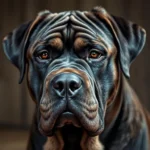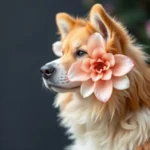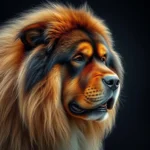
Introduction
Dachshunds, affectionately known as “wiener dogs,” have long captured the hearts of dog lovers around the world. Originating in Germany during the 15th century, these small hounds were bred for hunting badgers and other burrowing animals. Today, they are one of the most popular breeds in many countries, known for their playful personalities, intelligence, and unique appearance.
Understanding dachshund colors is crucial not only for aesthetic appeal but also for breeding and health considerations. The colors of a Dachshund can influence breeding practices and even impact the dog’s health. This article delves into the fascinating world of dachshund colors, exploring their significance, variations, and the genetics behind these stunning canines.
Understanding Dachshund Colors
What Are Dachshund Colors?
The term dachshund colors refers to the various coat colors and patterns that these dogs can exhibit. Dachshund coats can be categorized into several types, including solid, dapple, brindle, and piebald, each with its own unique characteristics and visual appeal.
Importance of Color in Dog Breeding
The color of a Dachshund can significantly impact breeding practices. For instance, specific colors may be more sought after than others, leading breeders to prioritize these hues. However, breeding solely for color can raise ethical concerns, particularly if it compromises the dog’s health or well-being. Responsible breeders focus on both the aesthetic qualities of dachshund colors and the genetic health of their dogs.
Common Dachshund Colors
Solid Colors
Solid colors in Dachshunds are characterized by a uniform coat with no patterns. The most common solid colors include:
- Black: A classic and striking color, black Dachshunds often have shiny coats that stand out.
- Chocolate: Rich and warm, chocolate Dachshunds have a unique appeal with their deep brown hue.
- Red: This is perhaps the most recognized solid color, ranging from light to dark shades.
Each of these colors has its distinct characteristics and charm, making them popular choices among pet owners.
Dapple Colors
The dapple pattern is unique to Dachshunds and features a mix of lighter and darker shades, creating a marbled effect. Common variations include:
- Blue Dapple: A striking combination of blue and tan or cream, blue dapple Dachshunds have a memorable appearance.
- Chocolate Dapple: This variation combines chocolate with lighter patches, offering a beautiful contrast.
While the dapple pattern is visually appealing, it can also be associated with certain health concerns, such as vision and hearing issues. As a result, potential owners should be aware of these implications when considering a dapple Dachshund.
Brindle Colors
Brindle Dachshunds exhibit a distinctive coat pattern characterized by dark stripes on a lighter base color. This pattern can appear in various colors, including red, fawn, and chocolate. Brindle patterns develop due to the interaction of specific genes and can create stunning visual effects.
Piebald Colors
Piebald Dachshunds feature a coat with large patches of white and another color. This pattern can be found alongside solid colors, creating a striking contrast. Piebald coloring adds a unique flair to the breed, making these dogs easily recognizable.
Other Color Combinations
Beyond the most common colors, there are several less frequently seen combinations, including:
- Merle: A pattern that creates a mottled effect, merle Dachshunds are rare and often sought after.
- Wild Boar: This color features a mix of black and tan hairs, giving the coat a brindled appearance.
These unique patterns can be quite rare, adding to their allure among Dachshund enthusiasts.
Genetics of Dachshund Colors
Genetic Inheritance of Coat Colors
The colors seen in Dachshunds are determined by genetics, with various genes influencing coat color and pattern. Understanding the basic genetics behind dog coloration can help potential owners and breeders make informed decisions.
Some key points include:
- Dominant vs. Recessive Genes: Certain colors are dominant, meaning they are more likely to appear in offspring. For example, the gene for black color is dominant over chocolate.
- Coat Color Genes: Specific genes are responsible for the different coat colors and patterns, including the A locus (which determines black and red) and the D locus (which influences dilution).
Color Testing and Breeding
To ensure healthy breeding practices, genetic testing is essential. Breeders can conduct tests to identify the coat color genes present in their dogs, allowing them to make informed breeding decisions. Common genetic tests can identify whether a dog carries certain colors or patterns, which can help mitigate health risks associated with specific dachshund colors.
Caring for Your Dachshund’s Coat
Grooming Tips for Different Colors
Proper grooming is crucial for maintaining the health and appearance of your Dachshund’s coat. Here are some general grooming practices, along with specific tips for different dachshund colors:
- Regular Brushing: Regardless of color, all Dachshunds benefit from regular brushing to remove loose fur and prevent matting.
- Dapple and Brindle Care: Dogs with dapple or brindle coats may require extra attention to ensure their patterns remain vibrant. Use a soft brush and consider a hydrating shampoo to enhance their coat’s natural sheen.
Health Implications Related to Coat Color
Certain dachshund colors can be associated with specific health issues. For example, dapple Dachshunds may be more prone to congenital health concerns like vision and hearing impairments. Regular veterinary check-ups are essential to monitor for any potential health issues related to coat color.
Choosing the Right Color for Your Dachshund
Personal Preferences
When choosing a Dachshund, color can be a significant factor. Personal preferences often dictate which dachshund colors resonate most with potential owners. Some may lean towards the classic appeal of a red Dachshund, while others may be drawn to the uniqueness of a dapple or brindle coat.
Considerations for Potential Owners
While color is important, it’s essential to remember that it does not dictate a dog’s personality or behavior. Dachshunds, regardless of color, exhibit a range of temperaments and characteristics. When selecting a Dachshund, consider factors such as:
- Lifestyle Compatibility: Ensure that the dog’s energy level and temperament align with your household.
- Health Considerations: Be aware of the health implications associated with specific dachshund colors and consult responsible breeders who prioritize health alongside color.
Conclusion
Understanding dachshund colors goes beyond mere aesthetics; it encompasses breeding ethics, health implications, and personal preferences. By exploring the various colors and patterns available, potential owners can make informed decisions that prioritize both beauty and well-being. The diversity of Dachshund colors adds to the breed’s charm, and each dog brings its unique flair to the household.
As you consider adding a Dachshund to your family, take the time to appreciate the beauty and variety of dachshund colors. Whether you prefer the classic red, the stunning dapple, or the unique brindle, each color has its own story to tell. Embrace the journey of finding the perfect companion, and enjoy the love that comes with owning such a delightful breed.









